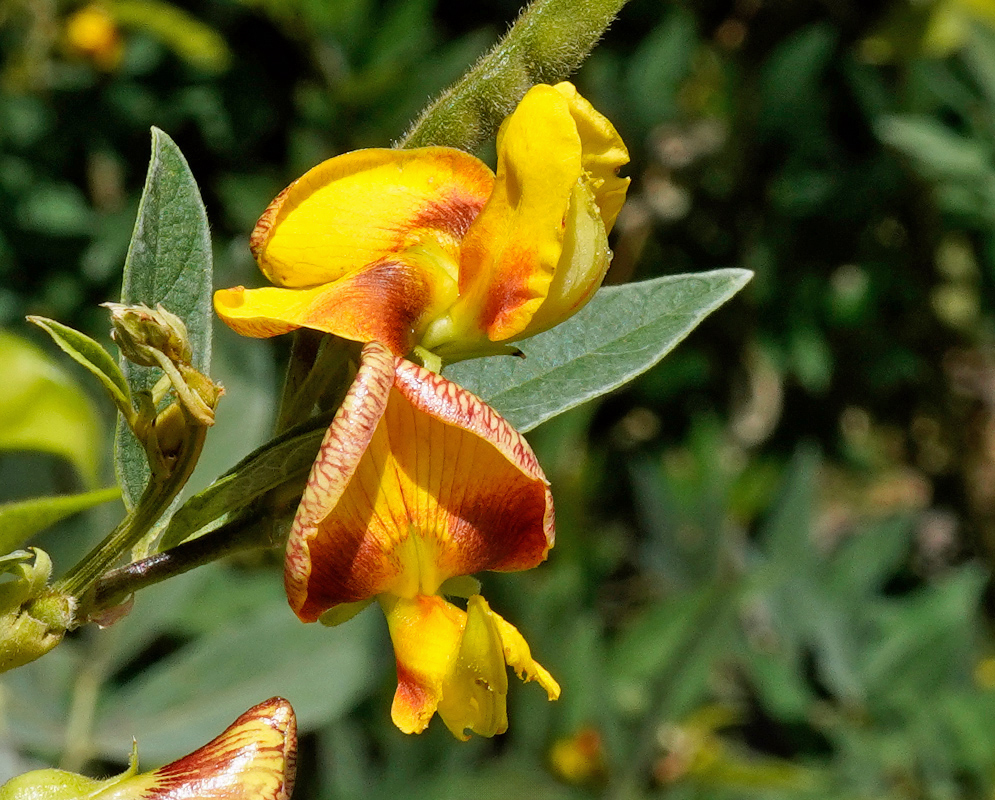This post has 11 Simple Fields-fields attached. Show fields.

Cajanus cajan is native to the Indian subcontinent and is now widely cultivated and naturalized across the tropics and subtropics. It is a long-lived shrubby legume typically 3–10 feet tall, often grown as a short-term perennial hedge or as an annual crop. Deep roots tolerate drought and compacted soils. The inflorescences carry papilionoid flowers about ¾–1 inch across; the banner is bright yellow, usually streaked or mottled red to maroon, the wings and keel fold tightly around the reproductive column, and the calyx and young shoots are softly hairy as shown in the photo. Commonly called pigeon pea, it is a major pulse for human food and animal forage. Dry seeds contain roughly 20–25% protein, with notable levels of dietary fiber and minerals; split seeds are cooked as dal, while immature green seeds and pods are eaten fresh or boiled with a mild, nutty flavor. India is the dominant producer and consumer. Selected horticultural lines vary in plant height, days to maturity, and seed color (cream, brown, speckled), and short-season cultivars allow harvest within 4–5 months where the dry season is brief. In restoration and home-garden settings, pigeon pea is valued for its resilience in hot, dry sites, its role in soil building, and its dependable food yield under low-input conditions. Photographed in Panama.

